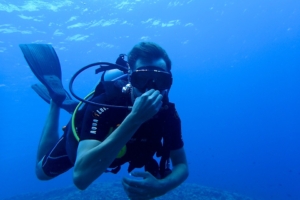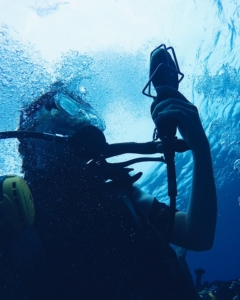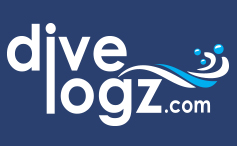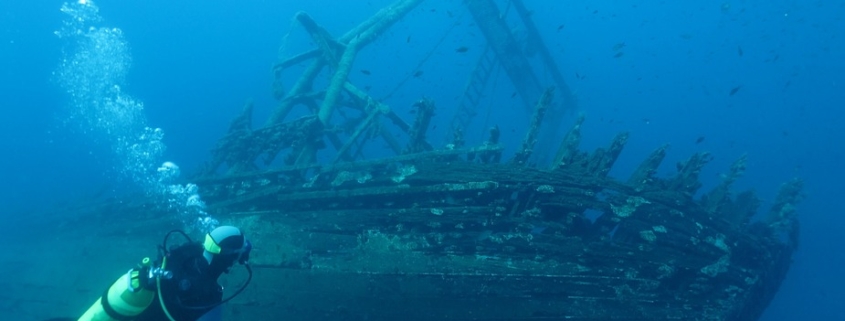There’s an old saying that if you do something you love, you’ll never work a day in your life. By choosing a job that you enjoy, you won’t really be “working.” You’ll be enjoying life while making money in the progress. Therefore, you might be considering a career as a professional diver. From underwater photography and videography to diving instructor, rescue operations and more, there are numerous diving careers available. With that said, transitioning from a recreational to a professional diver requires hard work and dedication.
Learn Buoyancy Control
Ask any professional diver and he or she will likely agree: Buoyancy control is one of the most important skills used when diving for commercial purposes. If you’re unable to control your buoyancy, you’ll consume an excess amount of energy. You may begin sinking to the bottom of the ocean floor, for example, so you kick your legs and feet to ascend. Alternatively, you may start floating up, so you’re forced to swim back down. Regardless of which diving career you are interested in, you’ll need to learn buoyancy control.
You can use either a weight belt or a buoyancy control device (BCD) to control your buoyancy. A weight belt is a belt featuring attachable weights that you wear around your waist, whereas a BCD is a vest with an inflatable and deflatable bladder that you wear over your wetsuit. Weight belts are easier to use, but BCDs offer greater control over your buoyancy. Whether you use a weight belt or BCD, you should learn its mechanics so that you can effectively control your buoyancy when diving.

Learn How to Clear Your Mask
In addition to buoyancy control, another essential skill used by professional divers is mask clearing. Mask clearing refers to the process of blowing air through your nose to expel any trapped water. It’s not uncommon for water to breach the seal of a dive mask. As water creeps into your mask, you may panic not knowing what to do.
To clear a flooded dive mask, press down on the top section of the seal and exhale through your nose. Assuming you exhale with enough force, it should blow out the trapped water so that you can see more clearly. Check out this previous blog post for more tips on how to clear your mask. As with most diving skills, though, practice makes perfect. The more you practice clearing your mask, the better you’ll become at this essential diving skill.
Optimize and Conserve Gas Usage
How much gas do you typically use when diving? As a professional diver, you’ll need to optimize and conserve your gas usage. Commercial dives can last for well over an hour, and if you consume your gas too more quickly, you may have to cut your dive short.
Here are some tips to optimize and conserve gas usage when diving:
- Inspect gas tanks and lines for leaks, and if you discover any, fix them before your next dive.
- Take slow and deep breathes through your regulator.
- Learn proper buoyancy control (see above).
- When possible, stay at a shallow depth.
- Invest in a high-quality, commercial-grade pair of diving fins.
- Get a good night’s rest before diving.
- Stay calm and don’t panic.
- Record your gas usage in a dive log.
- Maintain a streamlined position with your body.
- Choose a wetsuit that offers an adequate amount of thermal protection for the water in which you are diving.
- While holding your breath may sound like an effective way to conserve gas usage, it actually has the opposite effect by forcing your body to consume more gas.
- Stay in place while diving rather than swimming around.
Start Logging Your Dives
 If you aren’t doing so already, you should start logging your dives. By completing a dive log for each of your dives, you’ll have a written record of your underwater experiences. You can then use this information to better prepare yourself for future dives. If you discovered that one gas tank was insufficient for a particular dive, for example, you may want to bring two gas tanks. Alternatively, if a dive log shows that a 3 mm wetsuit didn’t offer enough thermal protection, you’ll know to wear a thicker wetsuit, such as a 5 mm wetsuit, when diving in similar waters.
If you aren’t doing so already, you should start logging your dives. By completing a dive log for each of your dives, you’ll have a written record of your underwater experiences. You can then use this information to better prepare yourself for future dives. If you discovered that one gas tank was insufficient for a particular dive, for example, you may want to bring two gas tanks. Alternatively, if a dive log shows that a 3 mm wetsuit didn’t offer enough thermal protection, you’ll know to wear a thicker wetsuit, such as a 5 mm wetsuit, when diving in similar waters.
More importantly, dive logs reveal your diving experience. When you complete a dive, you can ask the instructor or a buddy to sign it. If you want to start a diving career, the employer may inquire about the number of logged dives you’ve completed. You can then show the employer your verified dive logs, which have been signed by an instructor or buddy. Furthermore, many diving certification courses require a minimum number of logged dives. All divers should log their dives, but this practice is particularly important for those looking to transitioning into professional diving.
Practice Nighttime Dives
As a recreational diver, you probably won’t perform many nighttime dives. After all, it’s more enjoyable to dive during the daylight hours when there’s better visibility. As a professional diver, though, you may not have the luxury of choosing when you dive. Some diving occupations require nighttime diving. Therefore, you should practice diving at night.
Nighttime dives require the use of high-powered, underwater dive lights. It’s a good idea to carry both a primary dive light as well as a secondary backup dive light. If your primary dive light fails, you can use the secondary dive light to illuminating your surrounding environment. Nighttime dives can be daunting for newcomers, but it’s a good skill to learn if you’re planning to become a professional diver. Just remember to bring at least dive lights when venturing into deep waters at night.
Build Connections When Diving
With the exception of solo diving, diving is a social activity that allows you to meet and interact with other like-minded people. Some dive charter groups consist of over a dozen divers. As a result, you can use this opportunity to build connections in the diving industry. Some divers in your group may be professional divers, and by talking to them, you can learn more about the industry and how to enter it. If you’re interested in becoming a diving instructor, you can ask your instructor for more information on the requirements. The bottom line is that you should use this opportunity to network and build connections. Even if it’s a recreational dive, you can gain insight into the commercial diving industry by socializing with your instructor and group.
Get PADI Certified
You can’t expect to become a professional diver without certification. The Professional Association of Diving Instructors (PADI) offers several diving certification courses. At minimum, you should complete the Open Water Diver course and the Advanced Open Water Diver course (the former is a prerequisite for the latter). Depending on which diving professional are seeking, you may want to explore other PADI courses as well as, including the Divemaster course or Rescue Diver course. Keep in mind, each course has its requirements, so you should check to see whether you meet the criteria before attempting to enroll.
The binderz and refillz are the perfect way to track your progress so you can work on your dives and become a pro.



